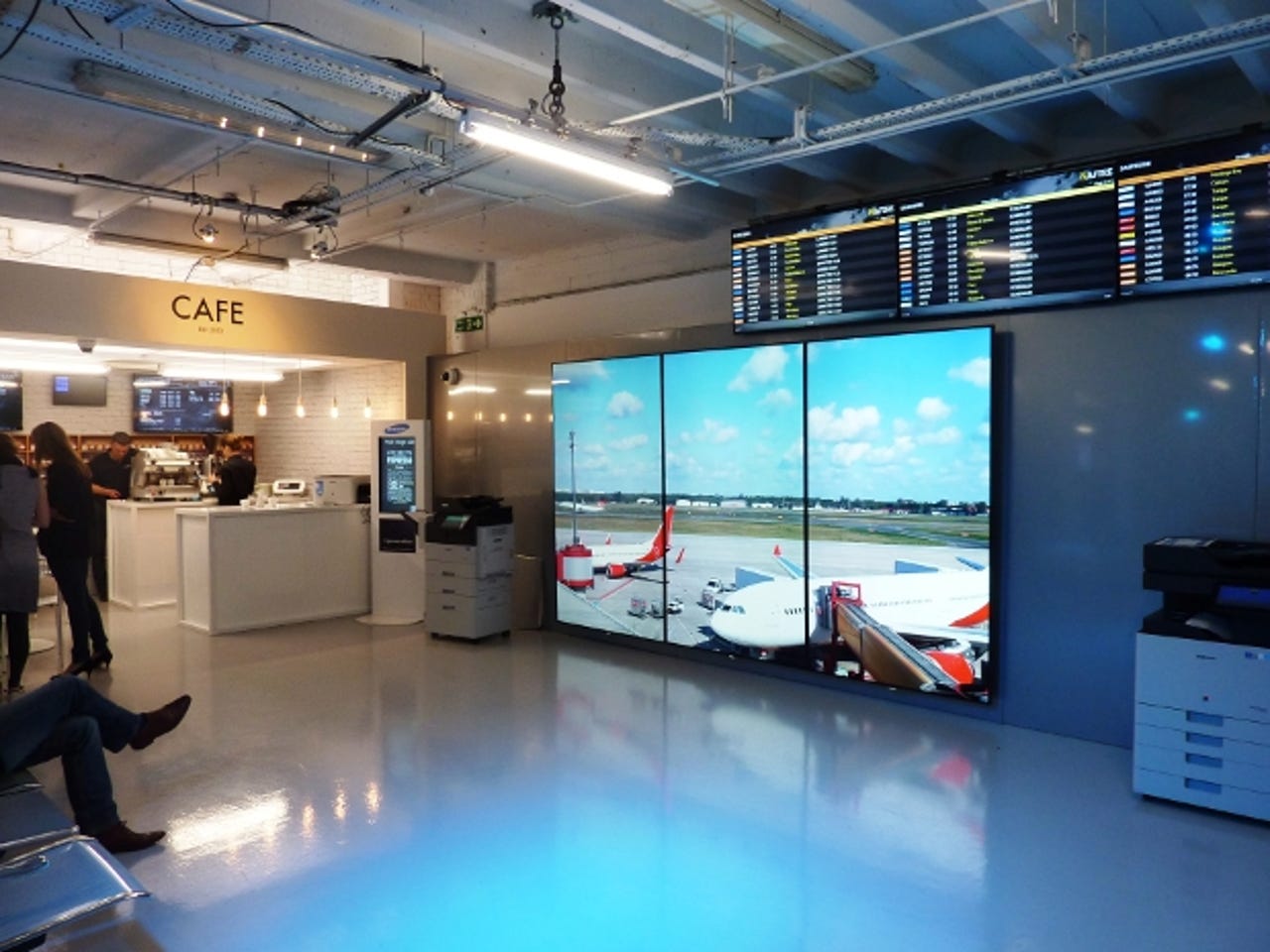Inside Samsung's airport (and boardroom, shop and train) of the future


Samsung is making a big strategic push into the business market, planning for it to account for 25 percent of the company's business by 2020 — and $1bn in the UK and Ireland this year. At a recent event in London the company showcased some of the ways its technology can be used across a range of business scenarios, from the boardroom and the trading desk to the airport. A mock-up of an airport and a café is seen here.
All images Steve Ranger/ZDNet
Transport is one of Samsung's target markets. And it's not just the transport operators' technology that's the focus; three-quarters of passengers will have also have a smartphone. Transport companies can use that to their advantage in a number of ways, from real-time social media sentiment tracking ('I hate this journey, the train is so dirty') right through to digital ticketing.
For example this system, which is on trial at Amsterdam's Schipol airport, uses facial recognition to allow passengers to pass through the airport without having to constantly pull out their passport and boarding card. Samsung said that similar technology could be used to replace passes in an office environment. This could be used in tandem with the geofencing capabilities on its smartphones so that elements on the device — such as the camera — could be automatically switched off, rendering them inoperable in sensitive locations, for example.
This system allows travellers to take control of big screens in order to access information at an airport. A smartphone user downloads the QR code, turning the phone into a remote control for the screen, which could display specific flight details or directions. Currently being piloted at an airport in Singapore, this system is likely to get a UK trial later this year.
This is Samsung's take on the boardroom of the future. Rather than being based around paper or laptops, the emphasis is on tablets and video conferencing.
Samsung's vision of the future of rail travel looks rather like air travel, with seat-back displays providing information or entertainment.
This system offers a lifesize interactive alternative to the standard car showroom. Car buyers can build a model based on their own requirements and also see what's in stock. The system is already in use in a number of car dealerships around the world.
Samsung also showed off some of its retail technology, including large touchscreens and small displays showing reviews of products on sale. The aim is to keep shoppers in-store while they do their research.
Samsung's control centre of future brings together CCTV video surveillance and other information feeds. The video on the main screen can also be viewed on the tablets and smartphones seen on the desk. Staff equipped with tablets and smartphones can also take photos and videos and send them back to the control centre.